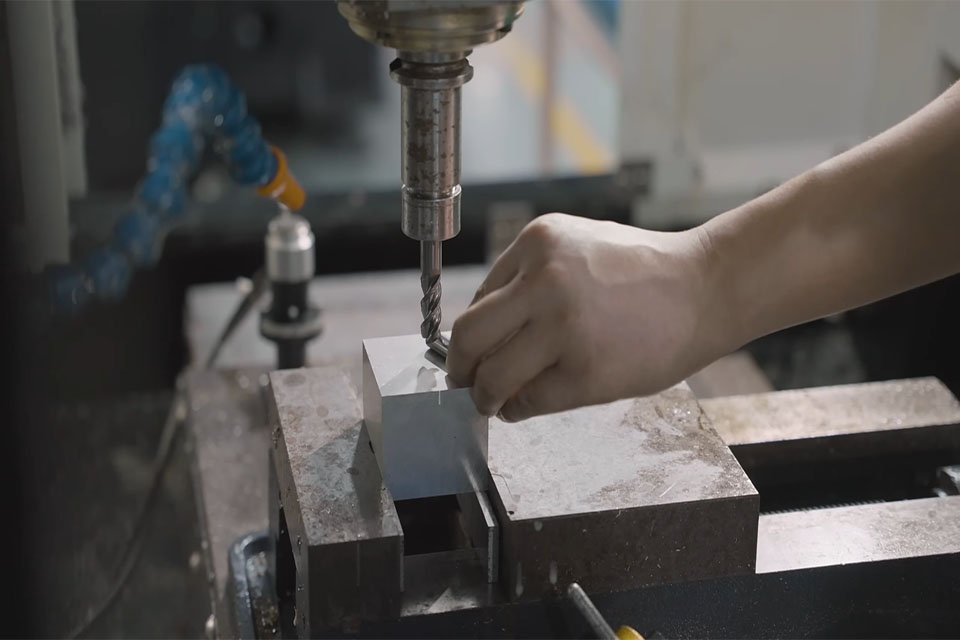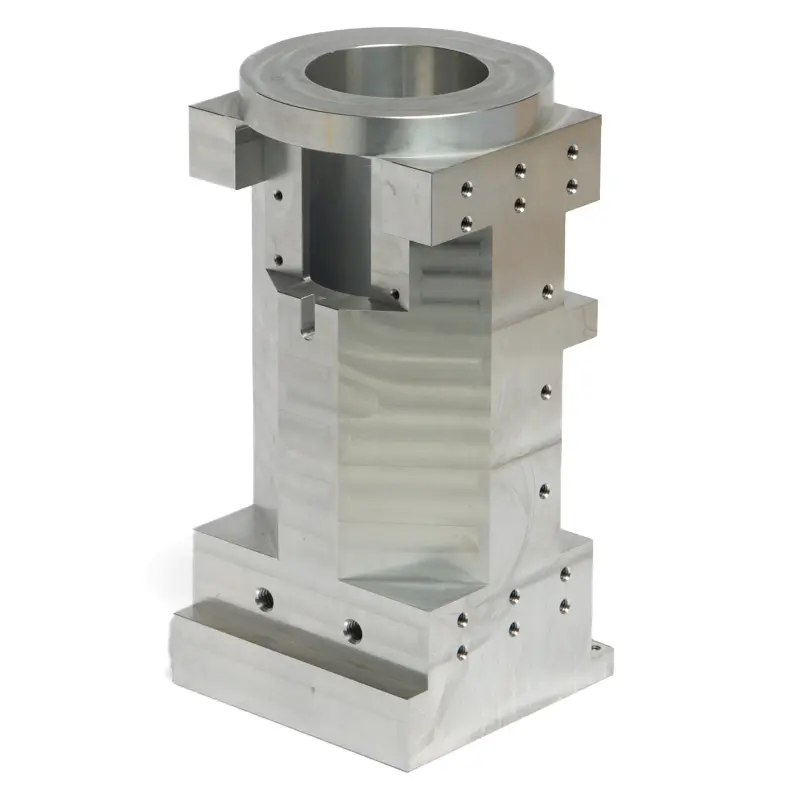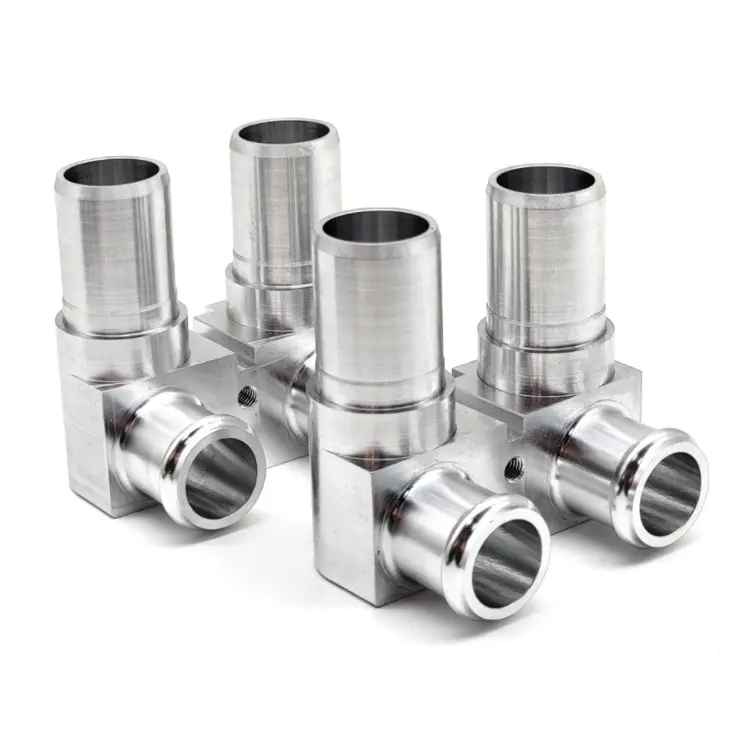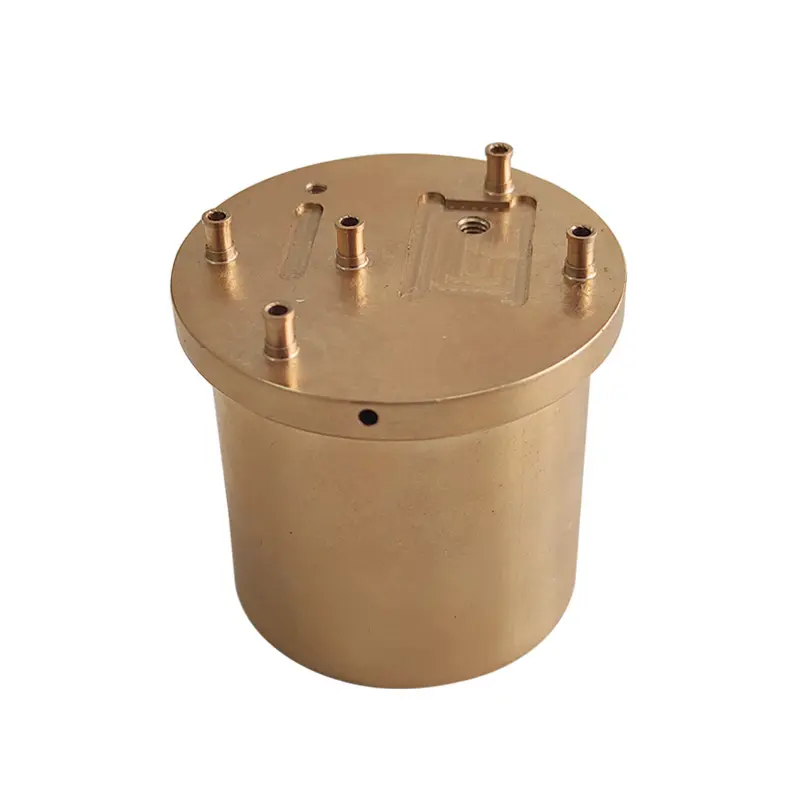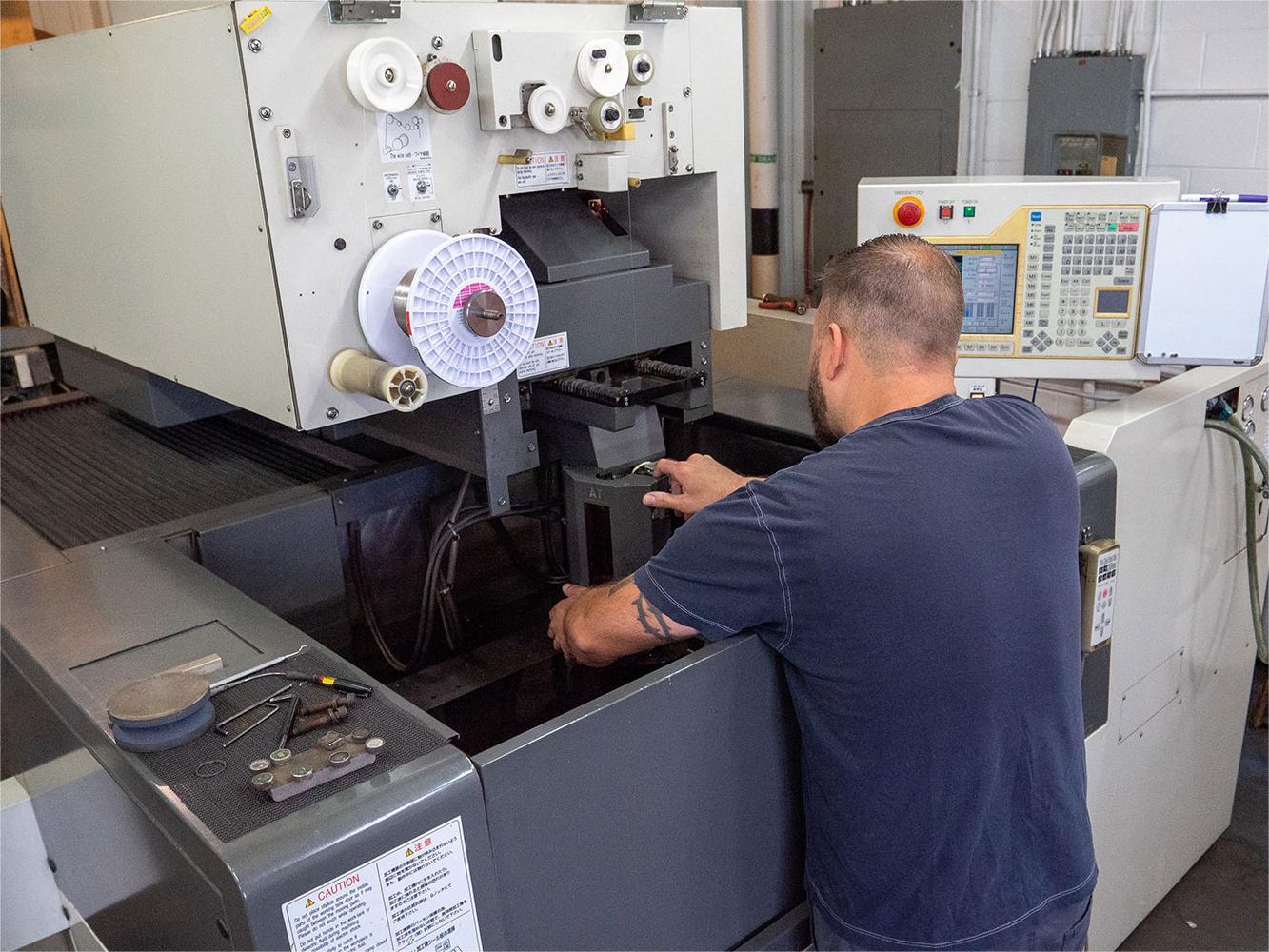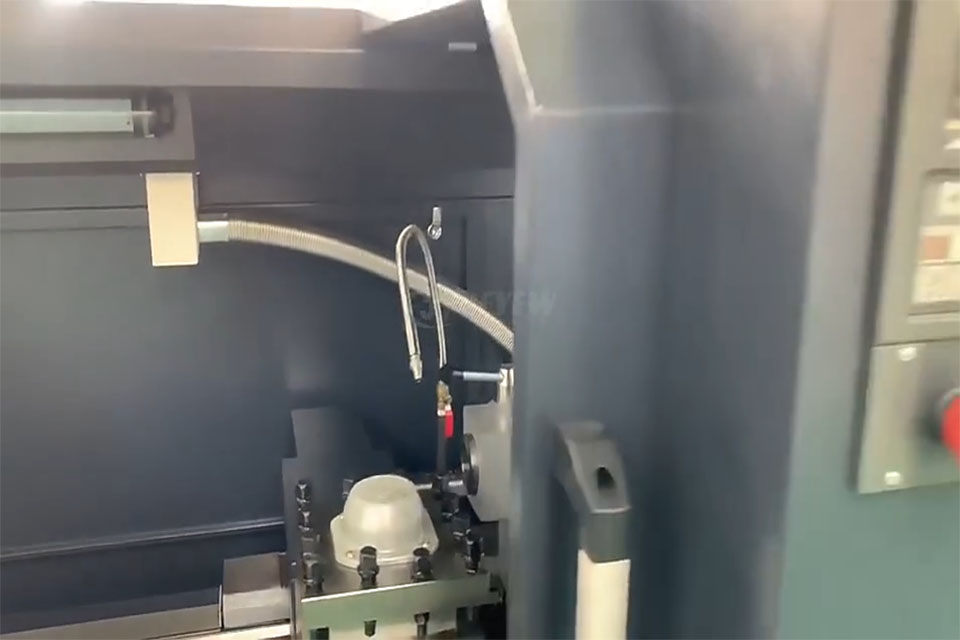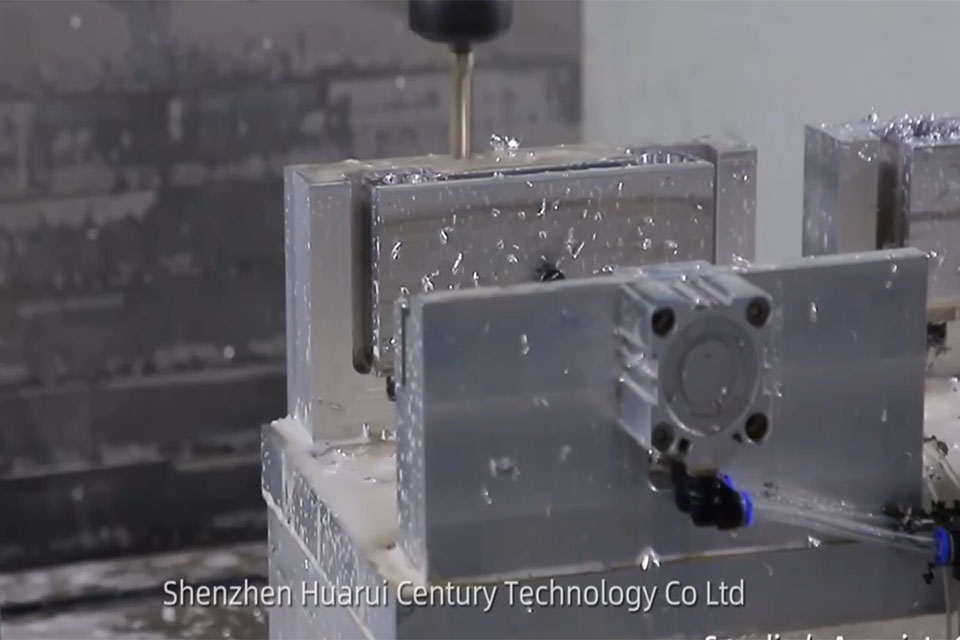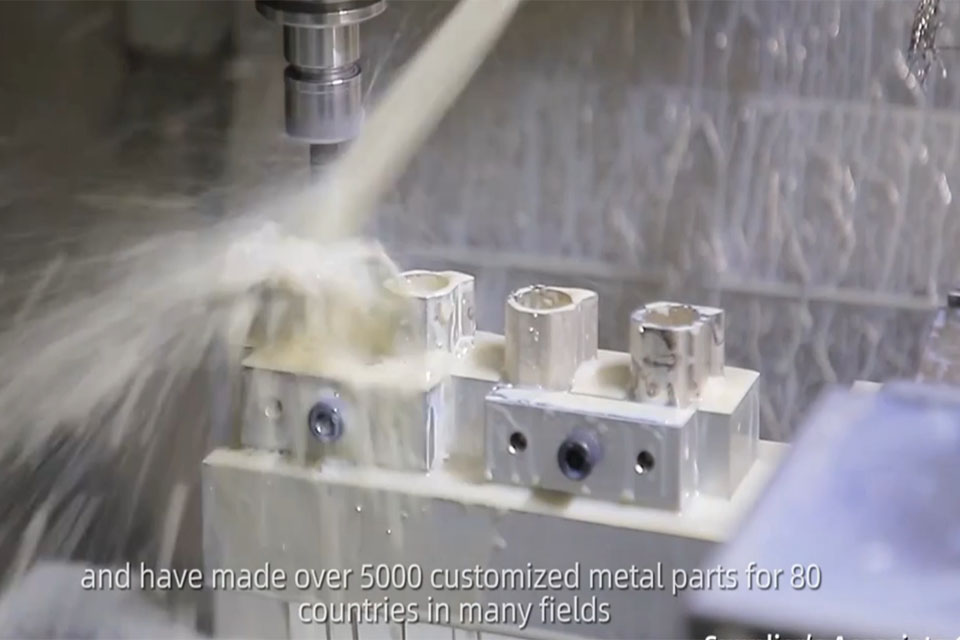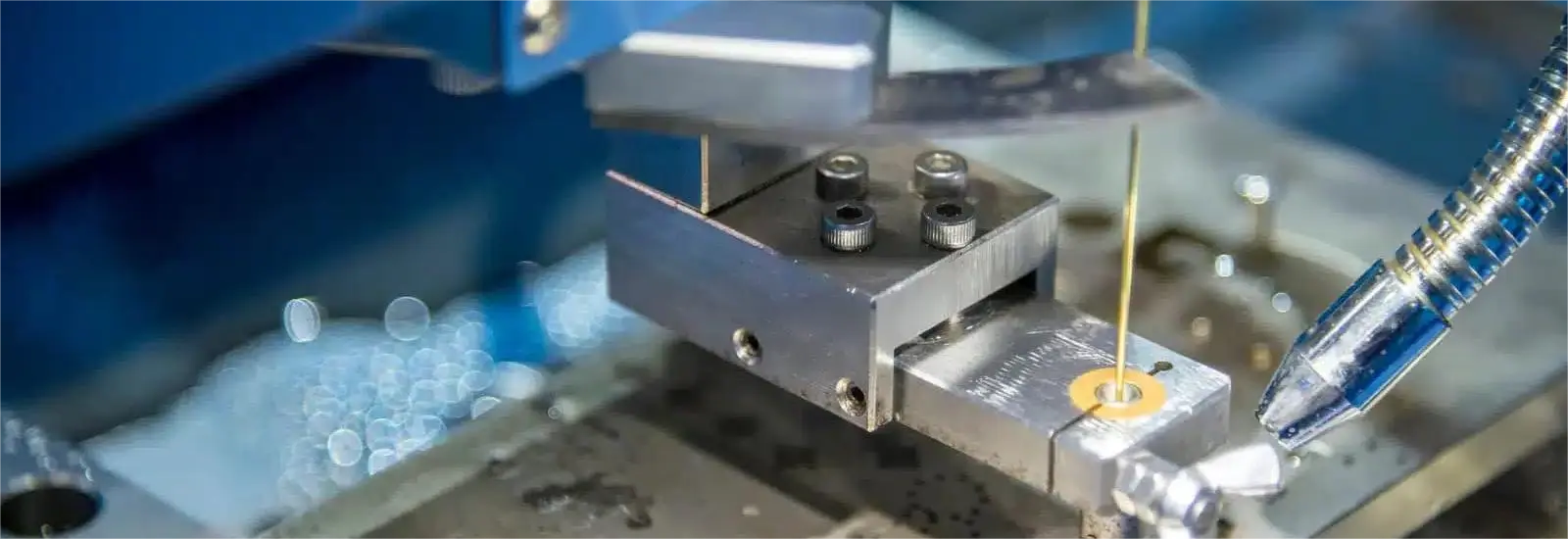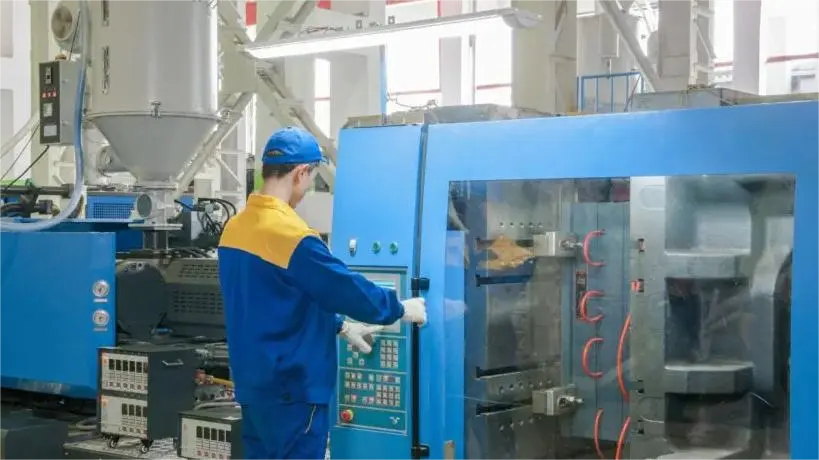
精密数控制造:通过专业抛光实现完美无瑕的表面效果
目录
导言
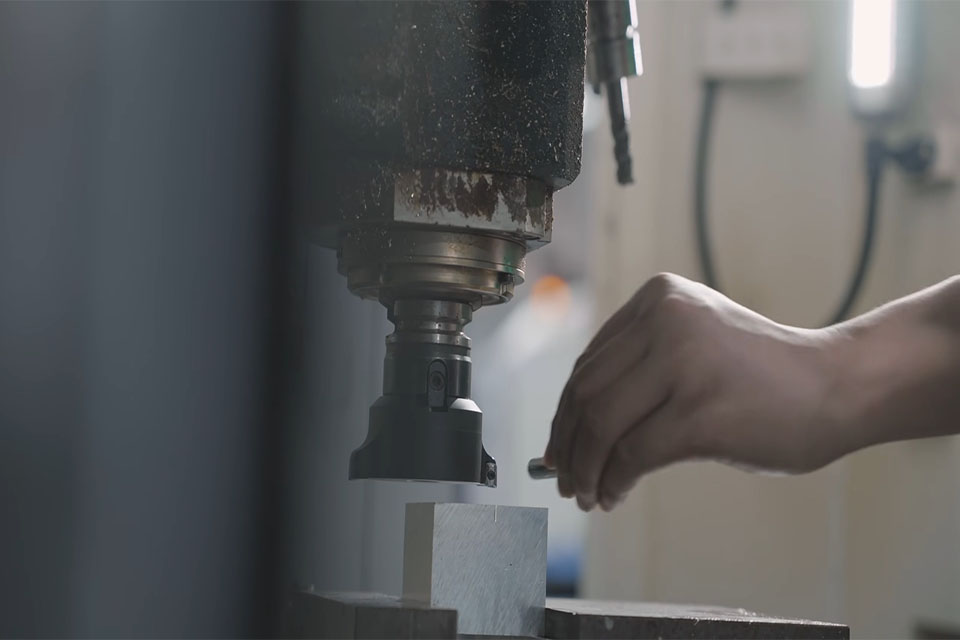
Why Surface Finish Matters: Beyond Aesthetics
Surface finish isn’t just about making a part look good. It’s fundamental to a component’s functionality, durability, and overall performance. A properly finished surface can:
- Enhance Corrosion Resistance: A smooth surface minimizes areas where corrosive agents can accumulate, extending the lifespan of the part. This is particularly critical in demanding environments, such as those encountered in 航空航天 应用。
- Reduce Friction: In moving parts, a polished surface reduces friction, leading to improved efficiency, less wear and tear, and potentially lower energy consumption.
- Improve Fatigue Strength: Surface imperfections can act as stress concentrators, leading to premature failure under cyclic loading. Polishing minimizes these imperfections.
- Facilitate Cleaning and Sterilization: 在以下行业 医疗设备, a smooth surface is crucial for easy cleaning and sterilization, preventing bacterial growth.
- Improve Adhesion of Coatings: Better surface preparation for superior adhesion of coatings.
Understanding Polishing in the CNC Manufacturing Process
Polishing is a subtractive surface finishing process that refines the surface texture of a material, often to a mirror-like shine. It’s a critical step after 数控加工 (including 数控铣床 和 数控车削) or other fabrication processes like 板材加工 to remove tool marks, scratches, and other imperfections. It involves using abrasive materials to progressively smooth the surface.
The Polishing Process: A Step-by-Step Guide
The polishing process is a carefully orchestrated sequence of steps, each contributing to the final, flawless finish. Here’s a breakdown:
表面处理: This initial step involves cleaning the workpiece to remove any contaminants like oil, grease, or dirt. A clean surface is essential for effective polishing. This might involve degreasing, ultrasonic cleaning, or other specialized methods.
Roughing (Coarse Polishing): This stage tackles significant surface flaws like deep scratches, pits, or burrs. Coarse abrasives (e.g., 60-80 grit) are used to remove these imperfections and create a more uniform surface.
Intermediate Polishing: With the major flaws addressed, we move to finer abrasives (e.g., 120-240 grit). This step further smooths the surface, removing the marks left by the roughing stage.
Fine Polishing: This is where the surface truly begins to shine. Very fine abrasives (e.g., 320-400 grit and higher) are used to eliminate the remaining minor imperfections, often resulting in a near-mirror finish.
Buffing: Buffing uses a soft cloth wheel (often made of cotton or felt) and a fine abrasive compound to enhance the luster and reflectivity of the surface. There are two key types of buffing:
- Cut Buffing: Uses medium to hard pressure to remove any remaining tiny scratches and create a semi-bright finish.
- Color Buffing: Uses lighter pressure to achieve a high-gloss, mirror-like finish.
Brightening (Optional): This step is often incorporated into the color buffing stage. It involves specialized techniques and compounds to maximize the reflectivity and brilliance of the surface.
Protection: During polishing, lubricants (like wax or kerosene) are often used. These serve a dual purpose:
- 润滑: Reduces friction between the abrasive and the workpiece, preventing overheating.
- 冷却 Helps dissipate heat generated during the process.
最终检查: The polished workpiece undergoes a thorough inspection to ensure it meets the required specifications. This may involve visual inspection, surface roughness measurement, and other quality control checks.
Diverse Polishing Techniques: Choosing the Right Method
Different materials and desired finishes require different polishing techniques. Here’s a look at some of the most common methods:
| Polishing Technique | 说明 | 优势 | 缺点 | 典型应用 |
|---|---|---|---|---|
| Mechanical Polishing | Uses abrasives (sandpaper, polishing wheels) to remove surface imperfections. Can be manual or machine-assisted. | High control over surface texture, effective for removing significant imperfections, suitable for achieving a mirror finish. | Labor-intensive, can generate heat (leading to distortion), requires skill to avoid over-polishing. | 汽车 parts, tools, dies, metal components requiring a high-gloss finish. |
| Chemical Polishing | Immerses the workpiece in a chemical solution that selectively dissolves surface material, smoothing out peaks and valleys. | Provides a uniform finish with minimal mechanical intervention, can polish complex geometries, improves corrosion resistance. | Requires careful handling of chemicals, less control over the process than mechanical polishing, potential environmental concerns. | Electronic components, parts with intricate shapes, applications requiring high corrosion resistance. |
| 电解抛光 | Uses an electrochemical process to remove material from a metal workpiece, resulting in a very smooth, bright, and corrosion-resistant surface. | Produces a very smooth and reflective surface, improves corrosion resistance significantly, can process complex shapes and internal surfaces. | Requires specialized equipment, handling of hazardous chemicals, not suitable for all metals. | 医疗设备, 航空航天 components, food processing equipment, applications requiring extreme cleanliness and corrosion resistance. |
| Vibratory Polishing | Parts are placed in a vibrating container with abrasive media, water, and sometimes chemical additives. The vibration causes the media to polish the parts. | Efficient for polishing large volumes of small parts, achieves consistent finishes, can be automated. | Limited to small or medium-sized parts, may require multiple cycles, not as precise as other methods for achieving specific textures. | 小型 消费品, hardware, jewelry, deburring small parts. |
| 抛光 | Uses a soft cloth wheel and abrasive compounds to enhance the shine and smoothness of a surface, typically after mechanical polishing. | Produces a high-gloss, reflective finish, effective for removing minor imperfections, suitable for a wide range of materials. | Labor-intensive, may require multiple steps, not effective for removing deep scratches. | Automotive trim, jewelry, decorative items, achieving a final high-gloss finish. |
| Lapping | A slow, controlled abrasive process using a lapping plate and abrasive slurry to achieve extremely flat and smooth surfaces with tight tolerances. | Achieves extremely flat and smooth surfaces, high precision, suitable for materials requiring tight dimensional tolerances. | Slow process, requires specialized equipment and skilled operators, not suitable for large-scale production. | Semiconductor wafers, precision mechanical components, optical lenses. |
| Barrel Polishing | Parts are placed in a rotating barrel with abrasive media. The tumbling action polishes the parts. Also known as tumbling. | Efficient for processing large quantities of small parts, reduces labor costs, versatile (can handle various materials). | Not suitable for large or delicate parts, lower precision compared to other methods, can be time-consuming. | Small hardware, fasteners, deburring and smoothing small parts. |
| Abrasive Flow Polishing | Uses a pressurized abrasive media (often a viscoelastic polymer) that is forced through internal passages or across the surface of a workpiece. | Highly effective for polishing complex internal geometries, produces a uniform finish, can reach inaccessible areas. | Expensive equipment, not suitable for all materials, may require multiple passes. | 工业设备, aerospace components, medical devices, parts with intricate internal channels. |
| Ultrasonic Polishing | Uses a tool vibrating at ultrasonic frequencies with an abrasive paste to remove microscopic amounts of material. | Excellent for intricate and delicate work, high degree of control, minimizes risk of damage, achieves extremely smooth finishes. | Slow process, requires specialized equipment, not ideal for removing large amounts of material. | Mold and die polishing, precision components, fine details. |
| Flame Polishing | Uses a high-temperature flame to melt the surface layer of a thermoplastic, smoothing out imperfections. | Quick and efficient for polishing plastics (especially acrylic), produces a clear, high-gloss finish, no need for abrasives. | High risk of overheating (causing warping), limited to thermoplastics, requires skilled operation. | Acrylic sheets, plastic edges, applications requiring a clear, glossy finish on plastics. |
Material Considerations: Polishing a Wide Range of Materials
Polishing can be applied to a vast array of materials, each with its own unique considerations:
- 金属 (Stainless Steel, Aluminum, Copper, Brass, Titanium) – Mechanical polishing, chemical polishing, and electropolishing are common methods. The choice depends on the specific metal and desired finish. For example, 精密加工 of stainless steel often involves electropolishing for superior corrosion resistance.
- 塑料 (Acrylic, Polycarbonate) – Mechanical polishing (with careful heat control), flame polishing, and chemical polishing are suitable options.
- Glass: Mechanical polishing with cerium oxide is a standard technique.
- Ceramics: Diamond abrasives are typically used due to the material’s hardness.
- 木头 Sanding followed by the application of polishing compounds or waxes.
- Stone: (Marble, Granite) – Mechanical polishing with diamond abrasives.
- 复合材料: (Carbon Fiber, Fiberglass) – Careful mechanical polishing or gel coat polishing.
Frequency of Polishing:
The frequency of polishing depends on the material, its use, and the environment it’s exposed to.
- 金属 Industrial settings might require annual polishing, while less demanding environments may require less frequent maintenance.
- 复合材料: Typically require less frequent polishing (every 2-3 years), unless exposed to high wear or UV light.
- 塑料 Polishing plastic too ofter may cause more issues.
Applications of Polishing Across Industries
Polishing plays a vital role in numerous industries:
- 航空航天 Polished components reduce friction and improve aerodynamic performance. Critical for engine parts and airframe components.
- 汽车 Provides a mirror finish for trim, chrome parts, and engine components.
- 医疗设备: Ensures instruments are smooth and free of imperfections, crucial for hygiene and preventing bacterial growth.
- 电子设备 Creates sleek, reflective surfaces for consumer electronics.
- 国防和军事: Polishing enhances the durability and performance of critical components.
- 工业设备: Improves the lifespan and efficiency of machinery parts.
- 消费品: Enhances the aesthetic appeal of various products.
- 能源与可再生能源: Polishing is used in the manufacturing of solar panels and wind turbine components.
- 机器人 Smooth surfaces are essential for precise movement and reduced wear in robotic systems. 机器人
- 电信: Polishing of fiber optic cables is essential. 交流
Choosing the Right CNC Manufacturing Partner for Polishing
Selecting the right partner for your CNC manufacturing and polishing needs is crucial. Look for a company with:
- 经验 A proven track record in your industry and with the materials you require.
- 专长: A deep understanding of various polishing techniques and their applications.
- 设备 State-of-the-art CNC machining and polishing equipment.
- 质量控制: Rigorous quality control processes to ensure consistent results.
- Capabilities: Offering 按需制造, 快速原型制作 及其他 数控解决方案.
Common Polishing Mistakes and How to Avoid Them
Even experienced professionals can make mistakes. Here are some common pitfalls and how to prevent them:
- Over-Polishing: Removing too much material, weakening the part. 解决方案 Carefully monitor polishing time and pressure.
- Inconsistent Pressure: Leads to uneven surface texture. 解决方案 Maintain consistent pressure throughout the process.
- Incorrect Abrasives: Using the wrong grit can damage the surface or be ineffective. 解决方案 Choose the appropriate abrasive for the material and stage of polishing.
- Poor Surface Preparation: Contaminants can interfere with polishing. 解决方案 Thoroughly clean the workpiece before starting.
- Neglecting Equipment Maintenance: Worn-out tools produce poor results. 解决方案 Regularly inspect and maintain polishing equipment.
Tips for Achieving an Optimal Polishing Finish
- Start with the Right Material: The quality of the base material significantly impacts the final finish.
- Use the Correct Tools and Abrasives: Select tools and abrasives appropriate for the material and desired finish.
- Control Pressure and Speed: Avoid excessive pressure or speed, which can lead to overheating and damage.
- Follow a Gradual Progression: Start with coarser abrasives and gradually move to finer ones.
- Maintain Cleanliness: Keep the workpiece and tools clean throughout the process.
- Inspect Regularly: Check the surface frequently for any imperfections.
Maintaining Polished Surfaces
- 定期清洁: Use a soft cloth and mild cleaner.
- Avoid Harsh Chemicals: These can damage the finish.
- Protect from the Environment: Minimize exposure to moisture, heat, and corrosive substances.
- Reapply Protective Coatings: Periodically apply wax or sealant to maintain the luster and protect the surface.
FAQ: Common Questions About Polishing
How much does polishing cost?
The cost varies depending on the material, complexity, and desired finish. Basic polishing can range from $20 to $100 per hour, but specialized techniques like electropolishing can be more expensive.What are the safety precautions for polishing?
Always wear protective gear (safety glasses, gloves, dust mask), ensure proper ventilation, secure the workpiece, handle chemicals carefully, and maintain tools regularly.How does compound quality affect polishing?
High-quality compounds ensure consistent results, minimize imperfections, and enhance corrosion resistance. Low-quality compounds can introduce new imperfections.What are the alternative to metal polishing?
There are many types of metal polishing such as electropolishing, bead blasting, powder coating, anodizing, and buffing.What is the difference between lapping and polishing?
Lapping produces ultra-flat surfaces with high precision using loose abrasives, while polishing focuses on smoothness and shine using bonded or coated abrasives.What’s the difference between polishing and buffing?
Polishing is a more aggressive process that removes surface imperfections, while buffing is a finer process that enhances shine and smoothness after polishing.
Conclusion: The Importance of Precision Polishing
Polishing is a critical aspect of CNC manufacturing, transforming raw materials into high-performance, aesthetically pleasing components. By understanding the various techniques, materials, and applications, you can ensure your products meet the highest standards of quality and durability. Partnering with a skilled CNC manufacturing service provider like us ensures you receive expert polishing and exceptional results.
主要收获:
- Surface finish is crucial for functionality, durability, and aesthetics.
- Polishing is a multi-step process involving various techniques and abrasives.
- Choosing the right polishing method depends on the material, desired finish, and application.
- Polishing plays a vital role in numerous industries, from aerospace to medical devices.
- Partnering with an experienced CNC manufacturing service provider is essential for achieving optimal results.
- Proper maintenance is essential for prolonging the surface condition.
- Different polishing techniques have their unique characteristics and applications.
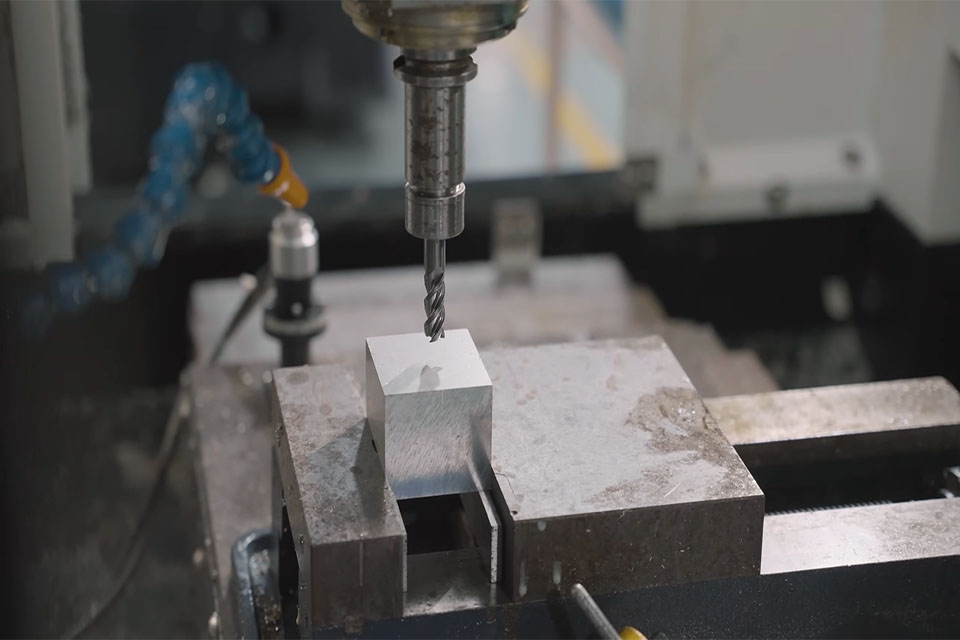
评论
出色的产品案例
标签
相关博客
从我们的博客中获取有关 CNC 加工的最新趋势和事实。

